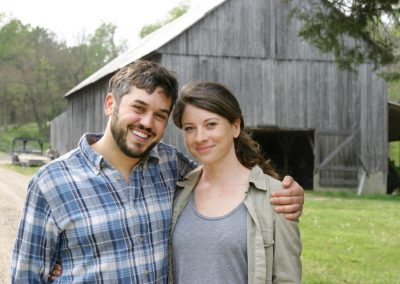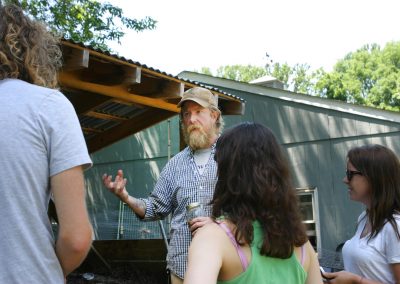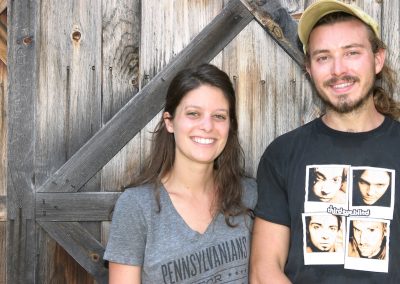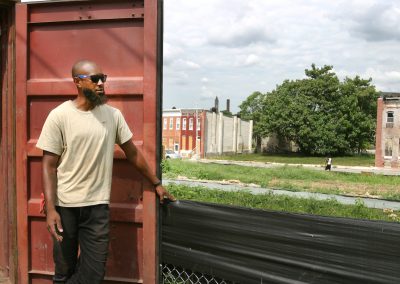Tomorrow’s Harvest >> Walker Marsh
Walker Marsh: Cultivating hope, one stem at a time
After a year of plowing through red tape, Walker Marsh’s flower farm finally blooms
Story by Conni Leigh James and Priscilla Wentworth; photos by Conni Leigh James
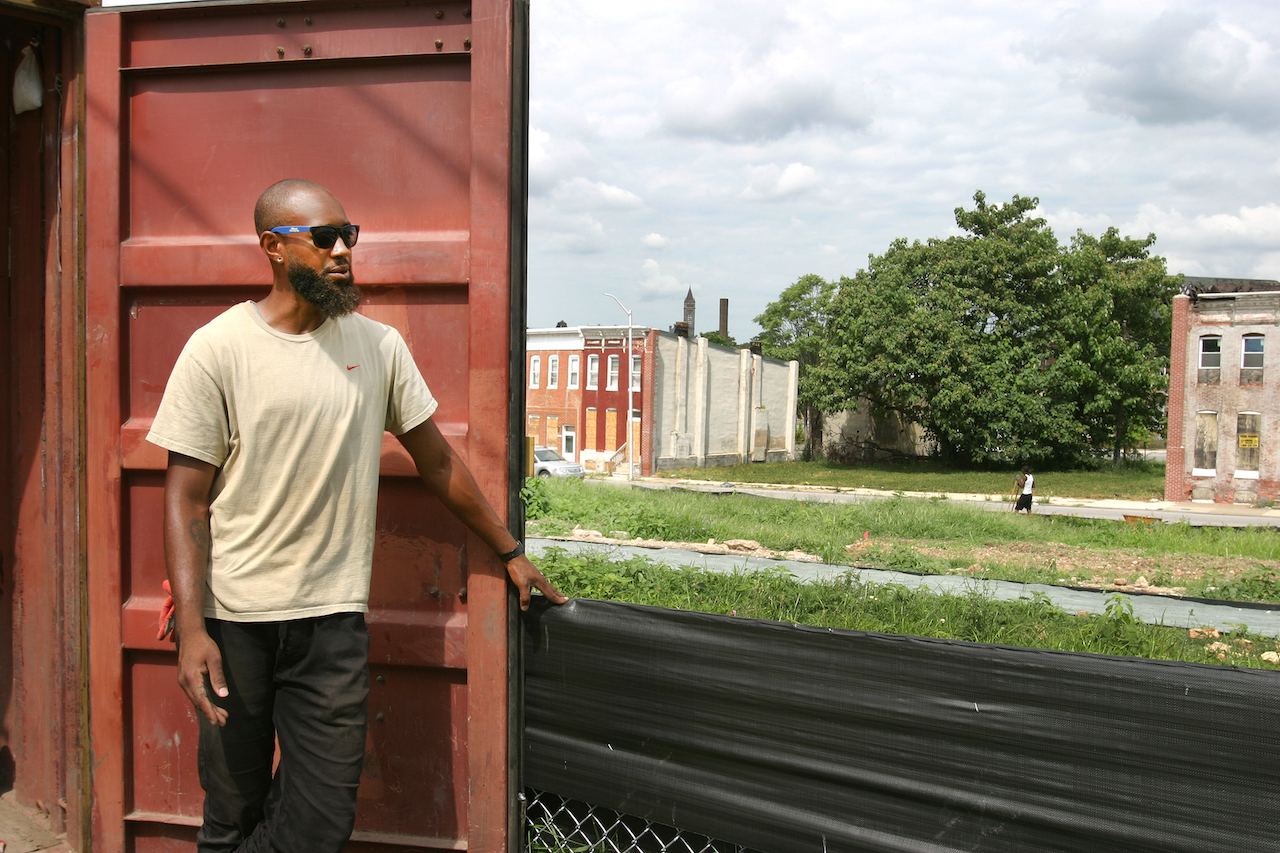
In this Broadway East neighborhood in Baltimore, July heat bakes off abandoned buildings, boarded windows and broken glass. But on the corner of North Gay and Washington, an oasis of green is emerging, transforming a once-empty, weed-littered lot into lush swaths of vegetables and flowers.
Walker Marsh, owner, founder and farmer of Tha Flower Factory, is walking visitors around the property, pausing to pull a weed or pick up a random bit of litter, and overseeing the work crews as they unearth bricks, rocks and rubble to make way for new gravel paths–literally tearing out the old foundations to make way for a new business and a new and different farming model.
“You have to approach farming different in the city. It’s not the same as in rural communities,†says Marsh, whose cheerful smile is infectious despite the heat and the hard work of the morning. “People say it’s a garden. I say, sure, you can call it anything you want. To me it’s a farm; what I’m doing is farming things.â€
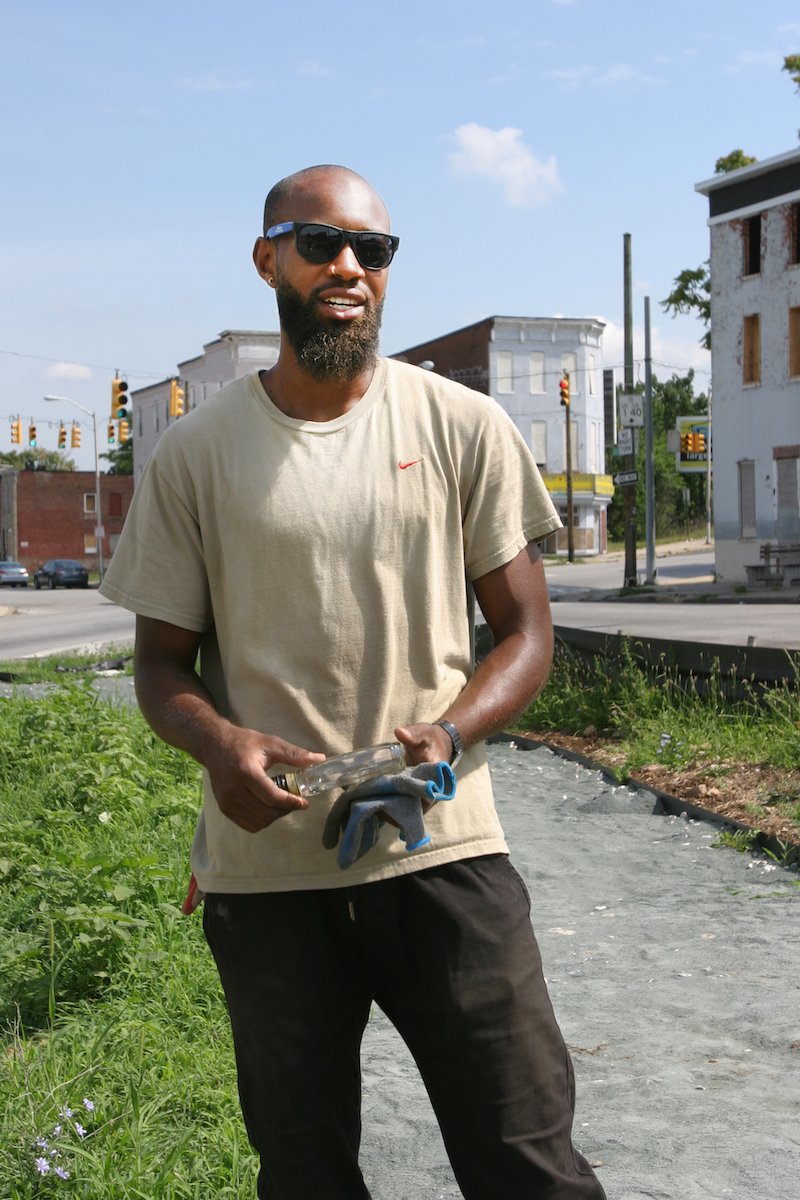
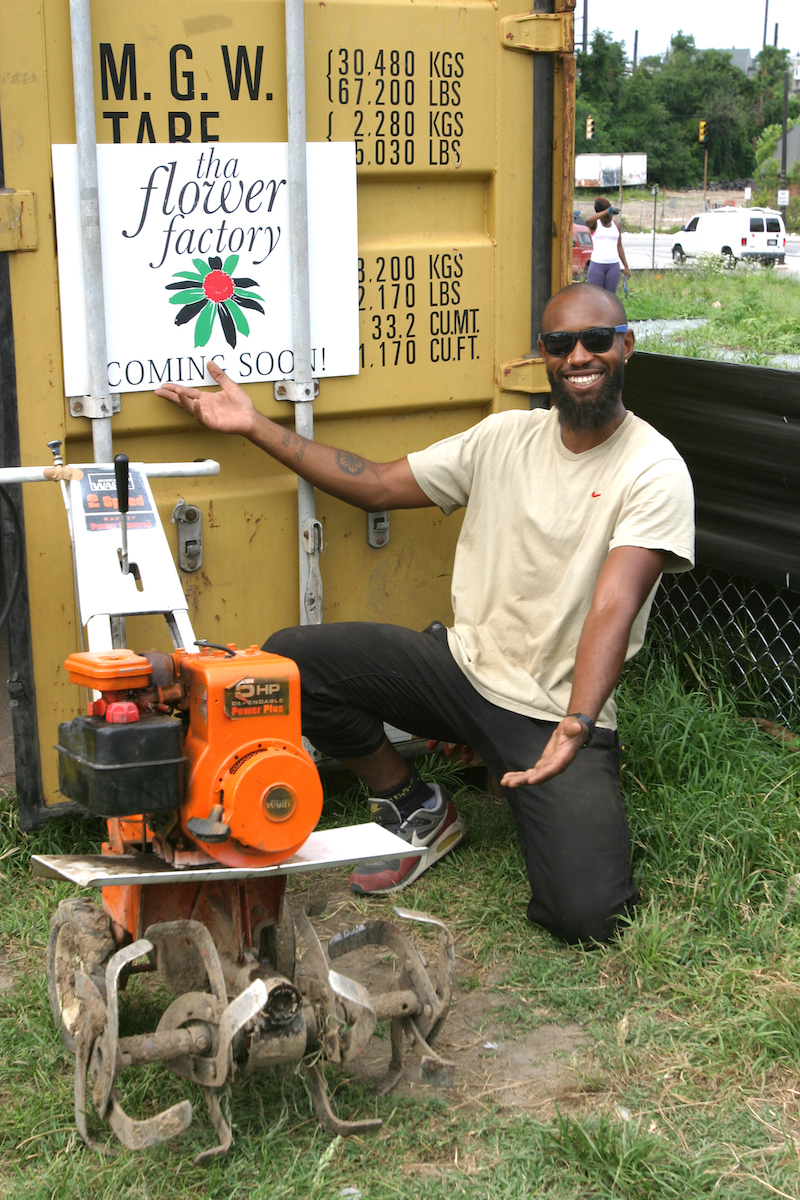
A winning idea to transform blight to beauty
Marsh, who grew up in Pikesville, was not originally interested in farming. He studied engineering for a bit, and then switched to nonprofit work, which lead to energy conservation and then finally to farming. “I joined this group called Civic Works, a nonprofit here in the city. I worked with them through AmeriCorps. Civic Works introduced me to Real Food Farm, and I fell in love with it on the first day.â€
In 2014 he entered and won Baltimore’s Growing Green Design Competition, which awards grants to turn vacant lots into green spaces. He presented the idea of an urban flower farm, something he thought could be lucrative.
“A lot of people have the idea that you can feed the whole city on an urban farm, but that’s just not going to happen, that’s not the reality, and I understood that.”
Growing Green awarded Marsh a grant of $63,000 to turn his dream of a cut-flower farm into reality, and now the unique challenges of carving an actual working farm out of a vacant corner lot began. “I was dealing with permits for this property and red tape with the city. They wanted a building permit even though there is nothing being ‘built’ here,†Marsh laughed, gesturing toward the empty area that once held a block of homes—each considered a separate lot—but has now deemed unbuildable because of storm water drainage issues.
â€We had to consolidate the 13 lots on this half-acre I’m farming, and that took forever,†said Marsh.

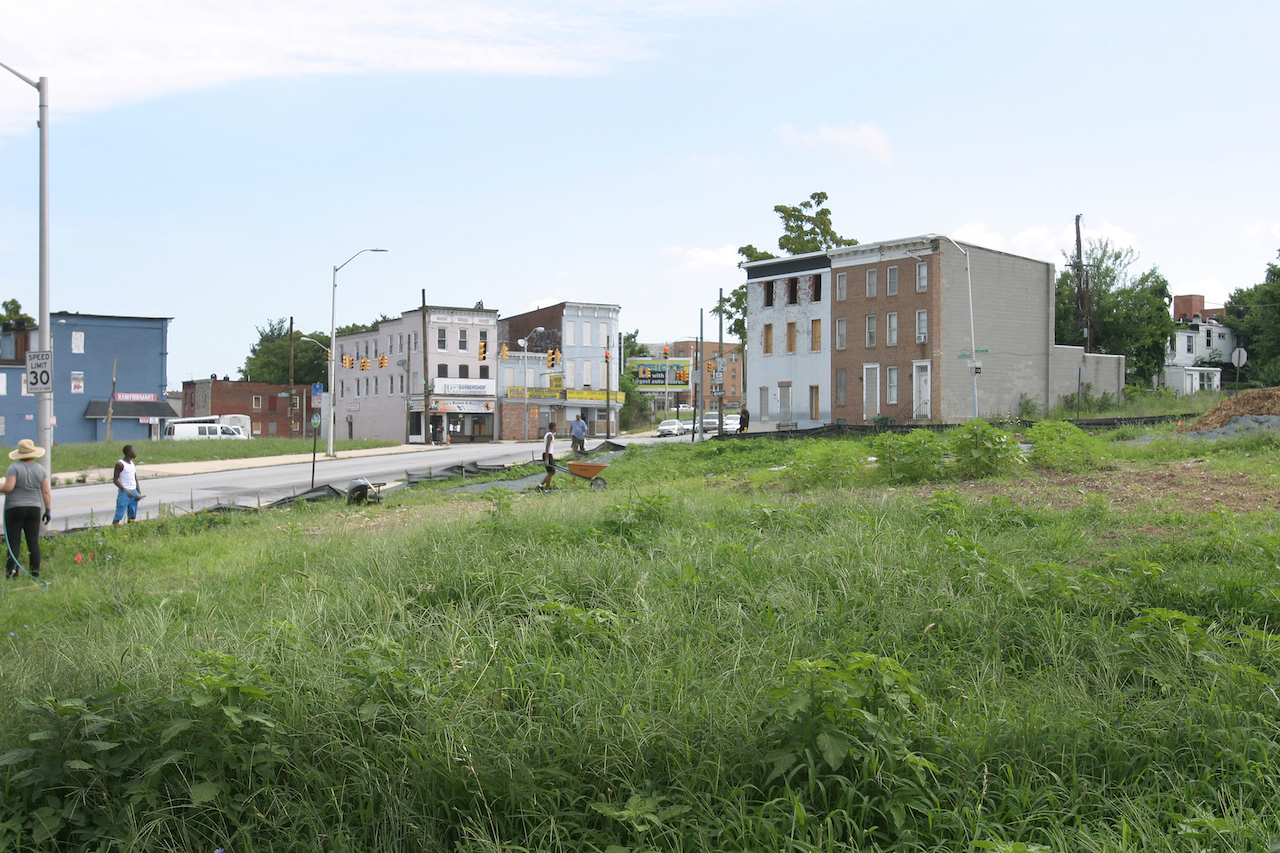
Laying the groundwork for over a year
The journey through the permitting process lasted well over a year. “I am one of the first in the city to be fully permitted, so it was a long process because the city had not done it before. There was a lot of question marks flying up that had to be addressed, and we didn’t always know who to talk to.â€
“There is storm water erosion under this street, Gay Street, which basically means there is water flowing under us down to the Harbor so the rain gardens we put in will help with that. This would have remained empty lots if I didn’t do anything with it; it is not able to be developed. The city owns it.â€
The journey through the permitting process lasted well over a year. “I am one of the first in the city to be fully permitted, so it was a long process because the city had not done it before. There was a lot of question marks flying up that had to be addressed, and we didn’t always know who to talk to.â€
“There is storm water erosion under this street, Gay Street, which basically means there is water flowing under us down to the Harbor so the rain gardens we put in will help with that. This would have remained empty lots if I didn’t do anything with it; it is not able to be developed. The city owns it.â€
“The $63k went to developing the site; it didn’t even go to business costs,†Walker explained. “We had a little bit of money for seeds and tools. For the grant, we had to have a design/drawing of the farm done. At first we had designed seating areas, but then the city said they didn’t want people at this lot because the lot up the street is being converted to a park. And they said there is a lot of drug activity in this area so they didn’t suggest benches, [because] then you find people out here that aren’t supposed to be here.â€
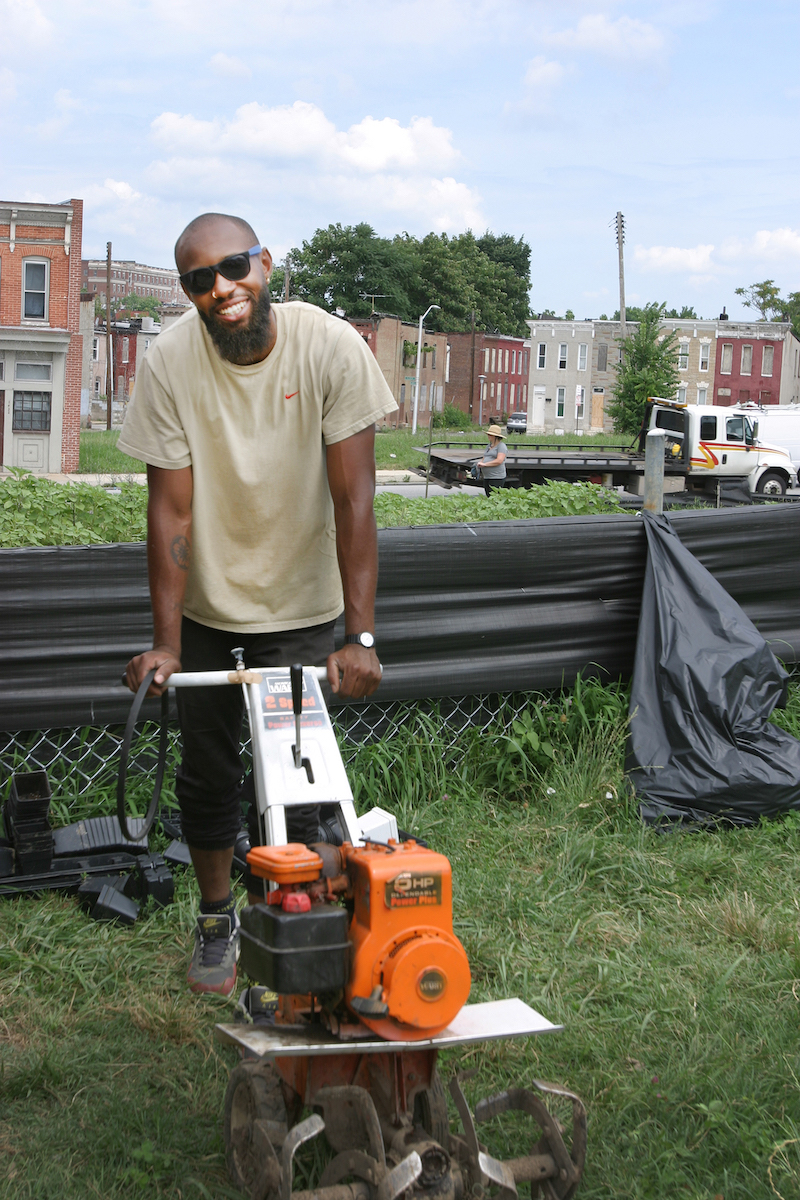
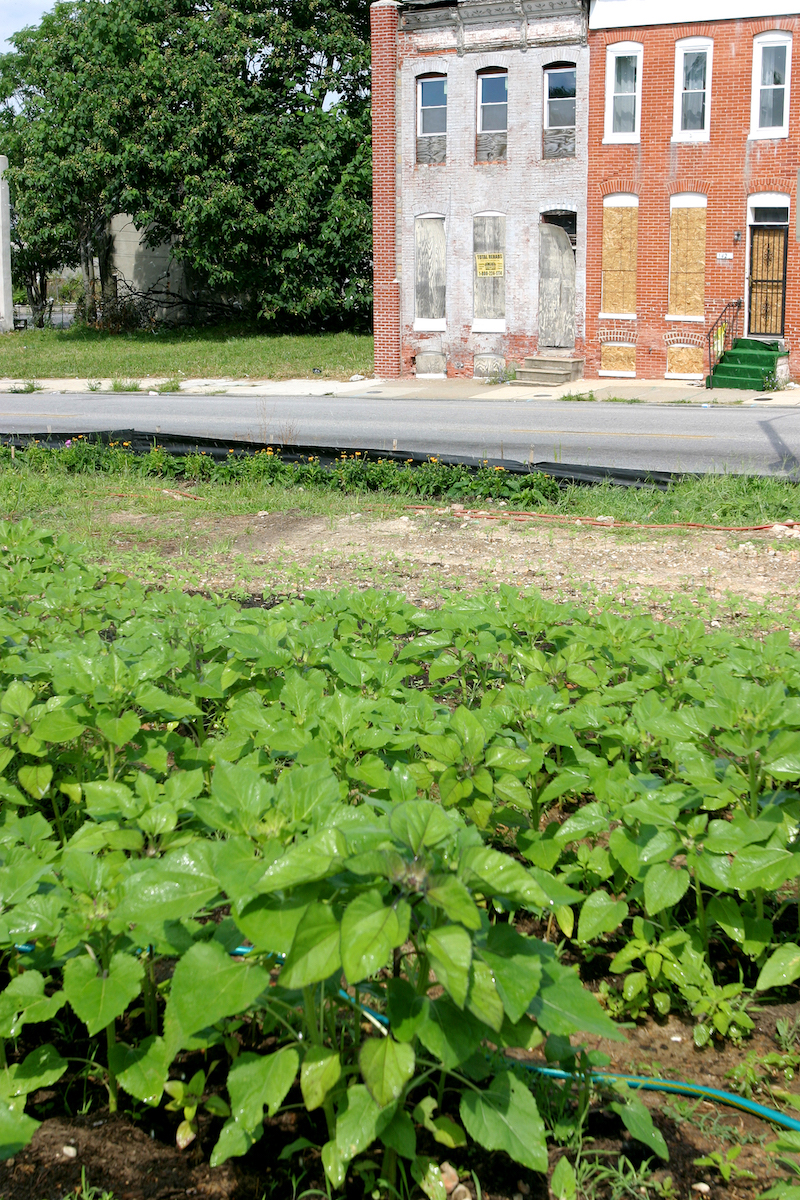
Partners, mentors and other resources
In addition to the grant for start-up monies, collaboration and partnerships have helped Marsh gain traction with the business. “Laura Beth has been instrumental to everything I have learned about flower farming,†said Marsh, referring to Laura Beth Resnick of Butterbee Farm, a successful cut-flower farm in Pikesville who was paired with Marsh as a mentor through Maryland FarmLINK’s Mentor Match Program.
“I worked at her farm a couple times, tilling and helping on the farm to gain experience. Laura was super helpful with the business side of things which is a foreign area for me. I didn’t know the numbers or how to calculate how much money to make off of each stem (of flowers). She helped me determine what the best markets would be to sell through too.â€
The staff that works on Walker’s farm is managed by the Community Conferencing Center, a group that works with people who have recently been incarcerated. It’s an informal but supportive partnership. The workers are paid and supervised by the Center. “I have become a mentor to the teenagers who work here, I want to see them build skills out here, but I can’t really balance it all yet,†said Marsh.
“2016 is year two with the farm operating as a business. I haven’t pulled in any money yet.†Marsh works two other part-time jobs in addition to Tha Flower Factory. “If I was doing this full time, which I would like to do, I could do a lot more here.†Marsh has started a Kickstarter campaign to continue to raise money for the project. His goal is to sell to local florists and grocery stores and eventually direct to consumers with a driveway bouquet pick-up right here at the farm.
But Marsh’s goals go beyond running a successful farm business; he also hopes to help bring beauty and hope to an area that often lacks both.
“I mean, you look around here and it’s just not pretty, to be honest with you. You have vacant houses over there, and you have random patches of trees, and bricks lying all around. It’s not the most visually appealing place. In Baltimore we struggle with this whole hopelessness, a lot of people just don’t see a future out here, because there’s really not much out here.”
But now there is. There is new growth and structured beds emerging from the weed-choked patch of soil. There are daylilies, coleus and salvia adding coolness and color to this sweltering corner. “We have astor and flux and lanthanum flowers in this bed, and more salvia over here.†Marsh continues the tour. “Over here we have an herb garden, peppers, gourds. We have sunflowers growing right now, and that will really add a whole ‘bang!’ to this area,†added Marsh, flashing that winning smile as he envisions the future of the farm.
“I like to push the boundaries of things. You really have to be at the forefront to lead change and be successful these days. You can’t do the same thing over and over again. It just isn’t working,†said Marsh.
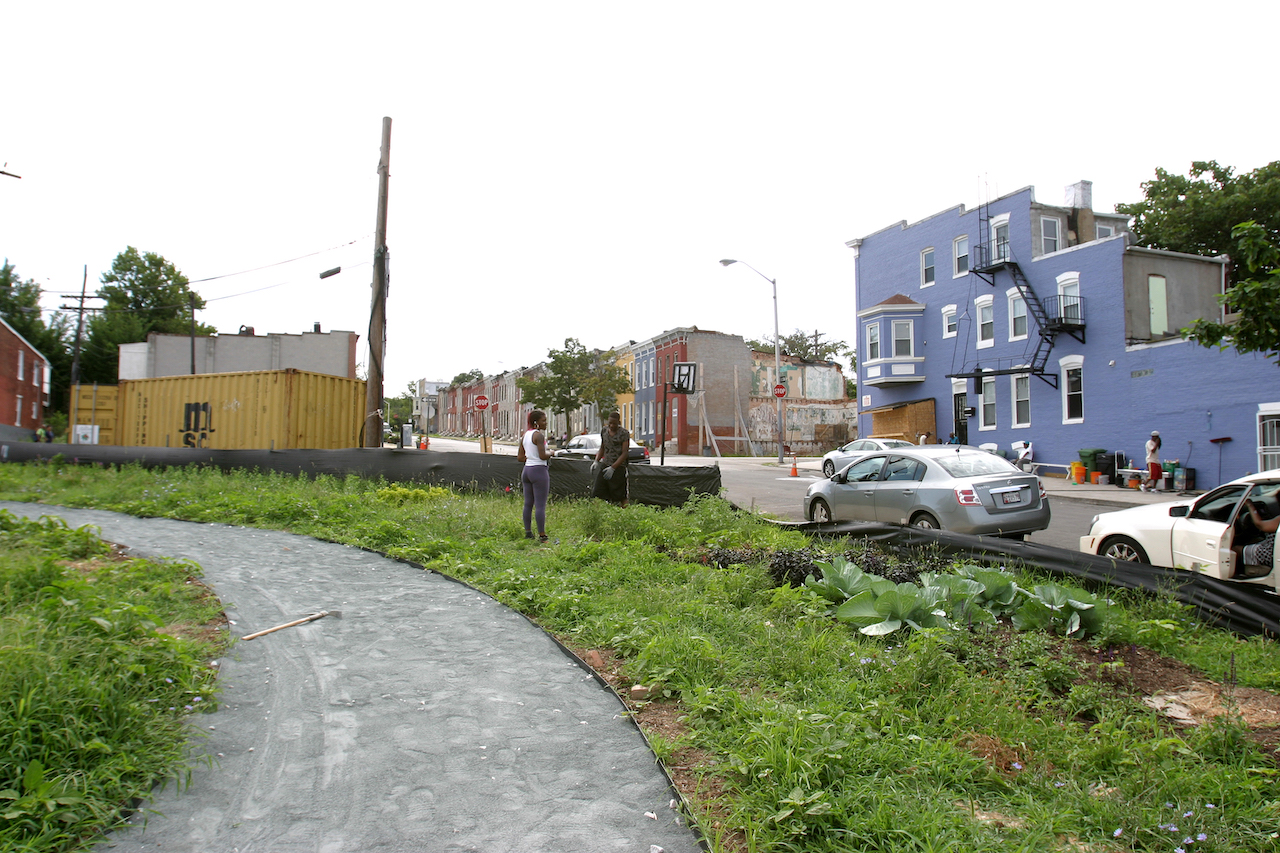
More from Tomorrow’s Harvest: New Farmer Stories
Follow us on Instagram @southern_maryland_ag[instagram-feed imagepadding=12]

